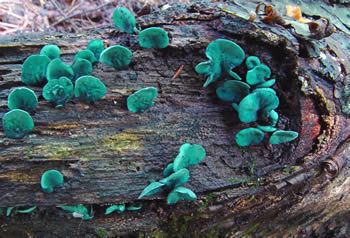Kingdom Fungi Rank Species | Family Helotiaceae | |
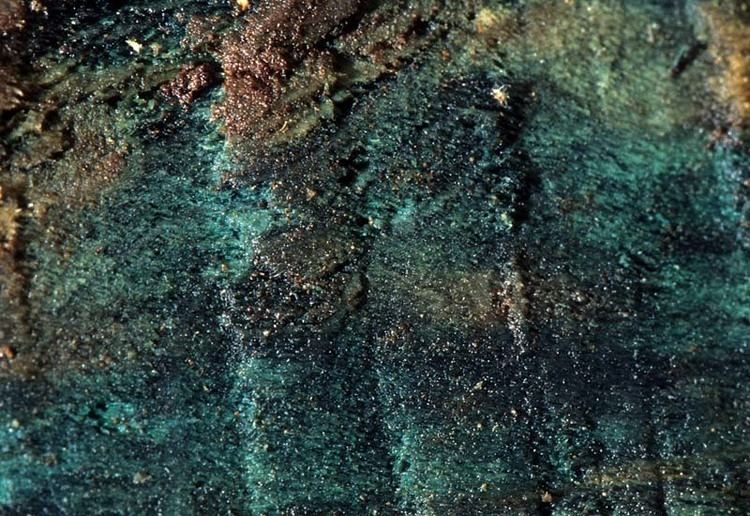 | ||
Similar Chlorociboria, Bisporella citrina, Ascocoryne sarcoides, Bisporella, Chlorosplenium | ||
Chlorociboria aeruginascens is a saprobic species of mushroom, commonly known as the green elfcup or the green wood cup because of its characteristic small, green, saucer-shaped fruit bodies. Although the actual fruit bodies are infrequently seen, the green staining of wood caused by the fungus is more prevalent.
Contents
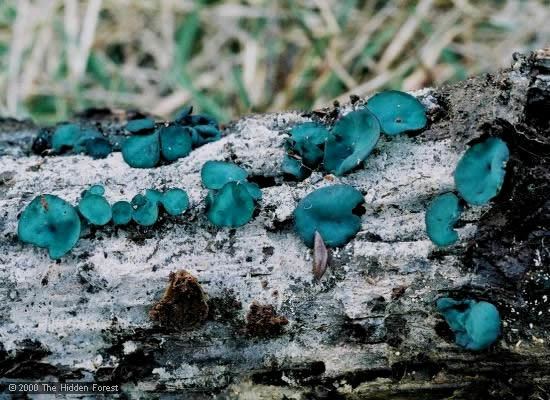
Chlorociboria aeruginascens hongos del parque el hays
Taxonomy
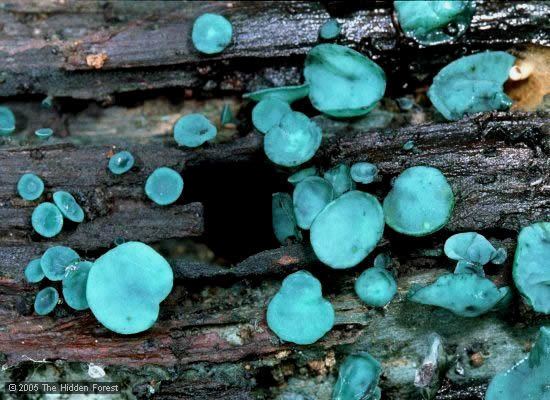
The specific epithet is derived from the Latin roots aerug- ("blue-green") and ascens ("becoming"). Some authors have used a variant spelling of the specific epithet, aeruginescens.
Description

This species has apothecia (cup-shaped ascocarps) that are usually attached laterally, often less than 0.5 cm in diameter, collapsing laterally and becoming rolled inwards when dry. The outer tissue layer of the apothecium, known as the ectal excipulum, has a delicate tomentose surface composed of hair-like, straight or sometimes coiled, smooth hyphae. The stipe is typically less than 3 mm long, with a central or eccentric attachment to the apothecia. Spores are roughly spindle-shaped (fusiform), smooth, and 5–8 by 0.7–2.8 µm. Apothecia grow on bark-free wood, especially oak, part of which at least is stained greenish by the mycelium. The abundant paraphyses, which may be entwined, are 55–95 by 1.5–2 µm, filiform, and septate with an unswollen, unbent apex that often extends beyond the level of the asci tips.
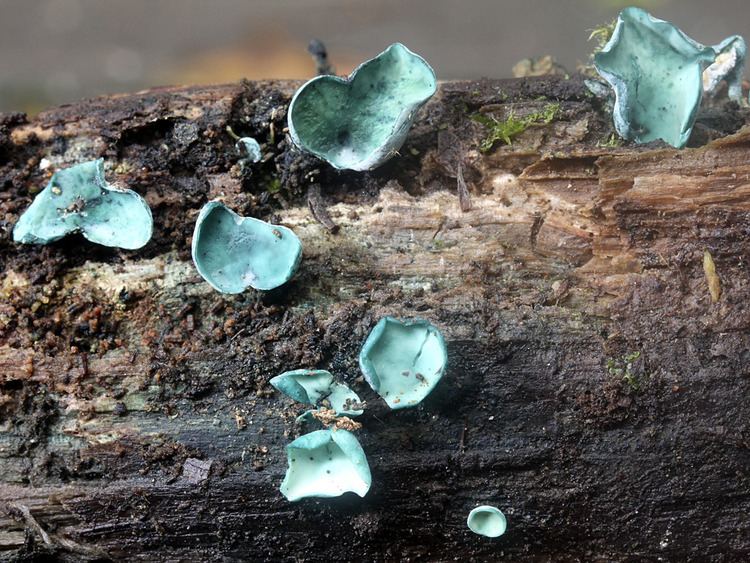
The species is distinguished from the closely related C. aeruginosum by having smaller spores. Although some authors have in the past failed to recognize any appreciable differences between the two species, Ramamurthi and colleagues note that not only are the spore sizes different, but C. aeruginascens have smooth tomentum hyphae, in contrast with the roughened hyphae of C. aeruginosum.
"Green oak"
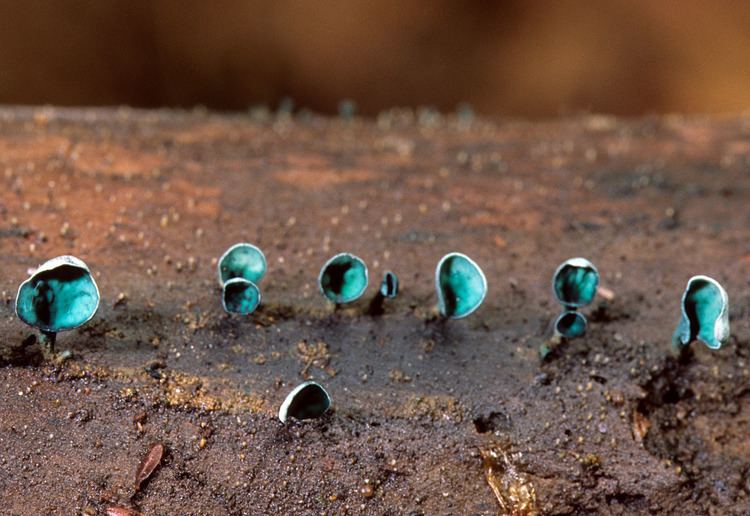
This species contains a quinone pigment called xylindein, a dimeric naphthoquinone derivative, whose structure was determined by spectroscopic means in the 1960s and later confirmed by X-ray crystallography. It is this compound that is responsible for the characteristic bluish-green stain of wood infected by this species, used today in decorative woodworking such as Tunbridge ware and parquetry. The use of this wood, known as "green oak", goes back to 15th century Italy, where it was used in intarsia panels made by Fra Giovanni da Veroni.
